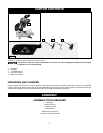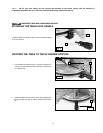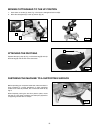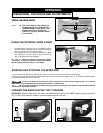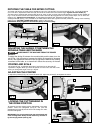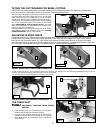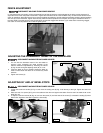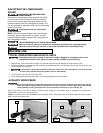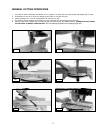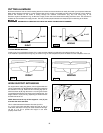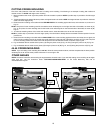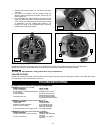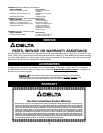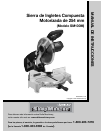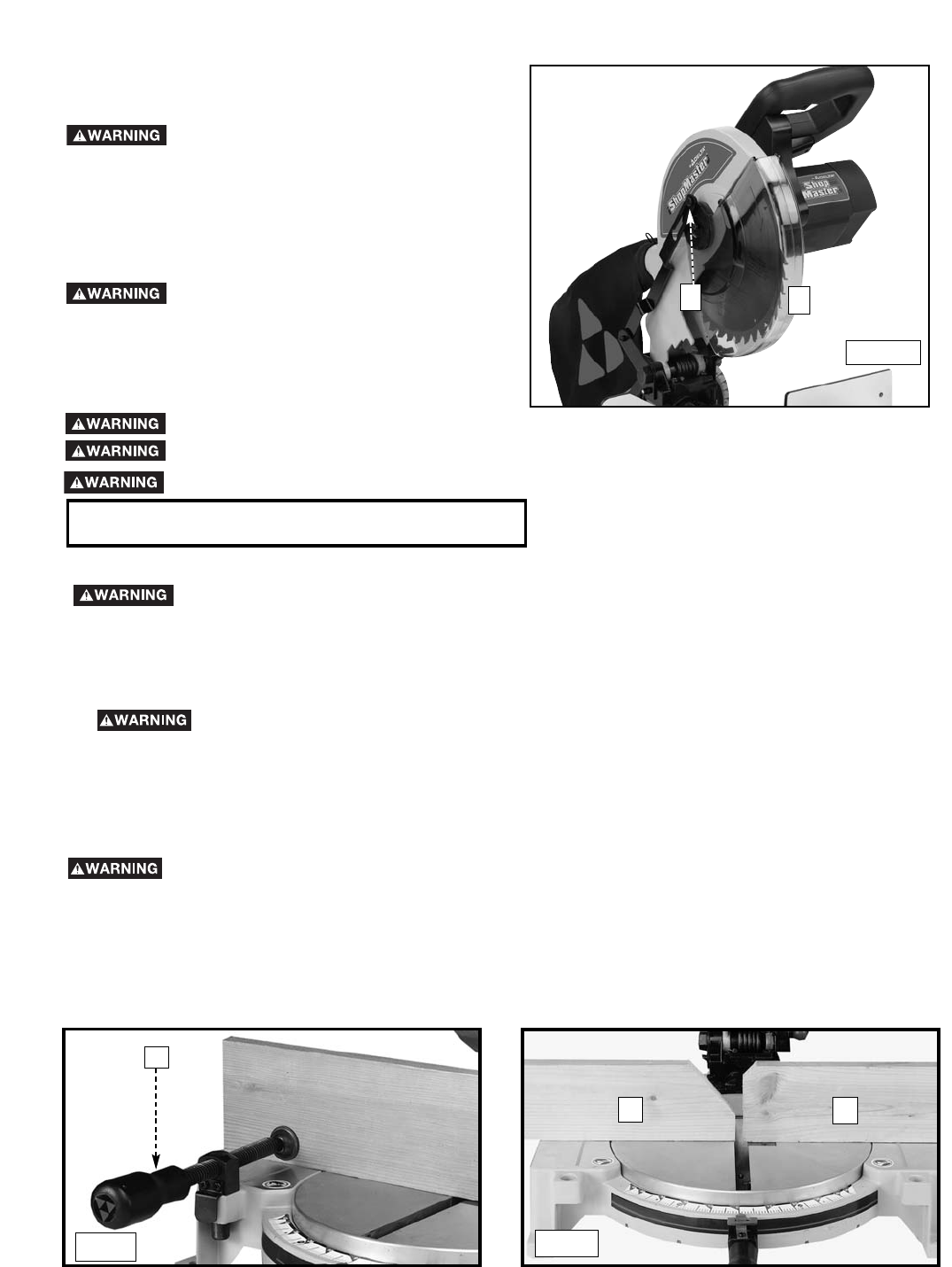
16
TYPICAL OPERATIONS AND HELPFUL HINTS
1. Before cutting, make certain that the cutting arm and table are at their correct settings and firmly locked in place.
2. Place the workpiece on the table and hold or clamp it firmly against the fence. The optional clamp (A) Fig. 30 can also be used
on the right side of the machine.
3. If the position or size of the workpiece causes your hand to be in the “Hazard Zone”, use the work clamp
to secure the workpiece. Keep your hands out of the “Hazard Zone”.
4. For best results, cut at a slow, even cutting rate.
5. Never attempt freehand cutting (wood that is not held firmly against the fence and table).
Holes are provided in the fence to attach an auxiliary fence (A) Fig. 31. This auxiliary fence is constructed of straight wood
approximately 1/2" thick by 3" high by 20" long.
MACHINE USE
AUXILIARY WOOD FENCE
When performing multiple or repetitive operations that result in small cut-off pieces (one inch or less), the saw
blade can catch the cut-off pieces and project them out of the machine or into the blade guard and housing,
causing damage or injury. To limit the risk, mount an auxiliary wood fence on your saw (Fig. 31).
NOTE: The auxiliary fence (A) is used ONLY with the saw blade in the 0° bevel position (90° to the table). When you bevel cut (blade
tilted), remove the auxiliary fence.
A
A
A
Fig. 30
Fig. 31
Cuttinghead must return quickly to the full up position. Sluggish or incomplete return of the
cuttinghead will effect lower guard operation possibly resulting in personal injury.
DO NOT REMOVE ANY OF THE BLADE GUARDS.
Make sure that all guards are in place and functioning properly before operating the saw.
Make sure that the fences are clear of the guard and blade before operating the saw.
ADJUSTING THE LOWER BLADE
GUARD
DISCONNECT THE MACHINE FROM
POWER SOURCE.
This machine incorporates a blade guard (A) Fig. 29B to
cover the rear section of the blade. After an extended
period of use, the movable lower blade guard may not
operate smoothly when the cuttinghead is lowered. This
can be corrected by adjusting nut (B) until the lower blade
guard moves freely.
Overtightening the nut could impair
guard movement.
NOTE: This unit has been designed with an articulating
rear guard. Before contacting the workpiece, the rear
guard will rotate upward to expose more of the blade as
the cuttinghead is lowered.
Fig. 29B
B
A



